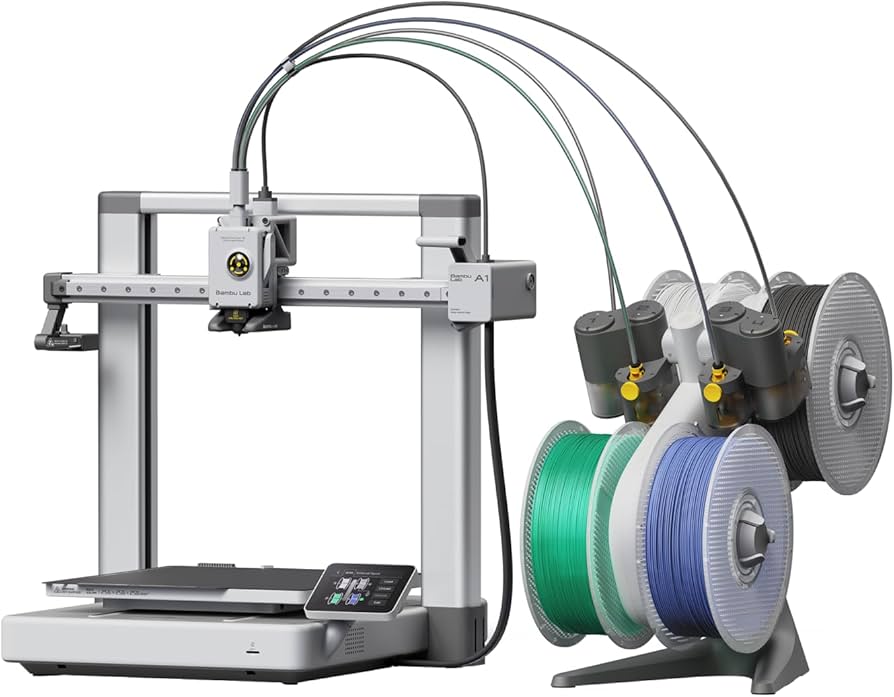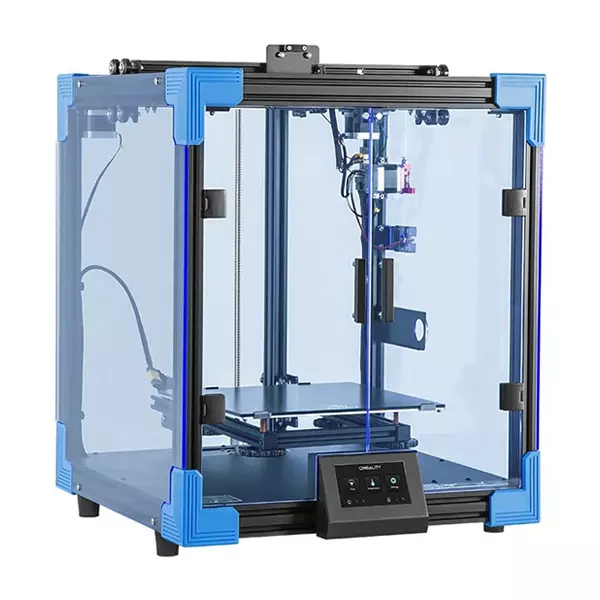Compare A1 vs Ender 6
Comparison between the best 3D printers
Choose the best 3D printer at the best price. The cheapest 3D printers are here.
Buy a 3D printer here with 3D Fila.
 |
 |
|
| Model | A1[BUY A1] |
Ender 6[BUY Ender 6] |
| Printing Material | Filament | Filament |
| Buy Filament for Bambu Lab A1 | Buy Filament forCreality 3D Ender 6 | |
| Estimated price | $700,00 | $499,00 |
| Manufacturer | Bambu Lab | Creality 3D |
| Release Year | 2023 | 2020 |
| Print Volume [mm] | 256x256x256 | 250x250x400 |
| Printer Size [mm] | 385x410x430 | 495x495x650 |
| Weight [kg] | 8,3 | 22 |
| Power Loss Recovery | YES | YES |
| Enclosed printer | NO | YES |
| Bed Leveling | Automatic | Manual |
| Filament End Sensor | YES | YES |
| Bed type | Heated | Heated |
| Power supply system | Direct Drive | Bowden |
| Standard nozzle | 0,4 | 0,4 |
| Maximum Nozzle Temperature [°C] | 300 | 260 |
| Maximum Bed Temperature [°C] | 100 | 100 |
| Maximum printing speed [mm/s] | 500 | 150 |
| Filament holder | YES | YES |
| Camera for supervision | YES | YES |
| Recommended filaments | PLA, PETG, TPU, PVA | PLA, TPU, ABS, PETG |
| Recommended slicers | SuperSlicer, PrusaSlicer, Cura, OrcaSlicer | Cura, Simplify, Slic3r |
| Maximum Resolution [mm] | 0,1 | 0,1 |
| Processor | 32 bits | |
| Display | Touchscreen 3,5 | Touchscreen TFT 4,3'' |
| Power Supply | 350 W | 24V / 504W |
| Connectivity | Wi-Fi, Bambu-Bus, Cartão Micro SD | SD / USB |
| Operating systems | Windows, Linux, Macbook | Windows, Mac, Linux |
| Date of registration in the system | 2024-07-17 | 2021-04-15 |
| Release date | 2023 | 2020 |
| Extra features | The BambuLab A1 printer features fully automatic calibration, multi-color printing with the AMS system, active flow rate compensation, quick nozzle change with a clip, active motor noise cancellation, a build volume of 256x256x256 mm³, a maximum extruder temperature of 300°C, and a heated bed of up to 100°C. In addition, it has high precision, a machine health management system and an intuitive 3.5-inch touchscreen interface. | The Creality Ender 6 stands out in the world of 3D printers with its CoreXY system, offering fast and high-quality prints. With a robust design, it has acrylic panels to protect against air currents, optimizing the printing of materials that require higher temperatures. It features a generic Creality hotend, effective up to ~240°C. Its differentials include 10mm GATES belts, promoting stability at high speeds, and a 360W power supply for reliable performance. The machine also has an intuitive user interface through a 4.3-inch touchscreen. |
| Support for multiple colors and materials (AMS and CFS) | YES | NO |
Notes * |
||
| Cost-benefit | 7 / 10 | 7 / 10 |
| Hardware | 4.2 / 10 | 2.5 / 10 |
| Tela | . | . |
| Print volume | 4 / 10 | 4 / 10 |
| Performance | 4 / 10 | 1 / 10 |
| [BUY A1] | [BUY Ender 6] |
Conclusion |
| In comparing the Bambu Lab A1 and the Creality 3D Ender 6, several key factors influence the decision for potential buyers looking for a suitable 3D printer. The Bambu Lab A1, released in 2023, offers advanced features such as automatic bed leveling, a higher maximum nozzle temperature, and faster maximum printing speeds. Its modern design includes Wi-Fi connectivity, a user-friendly touchscreen, and capabilities for multi-color printing. Additionally, the A1 is relatively lightweight, making it easier to move or reposition. However, it is not enclosed, which may be a disadvantage for those printing materials sensitive to environmental changes. On the other hand, the Creality 3D Ender 6 has been on the market since 2020 and is known for its robust construction and the enclosed design that mitigates issues related to airflow. Although it lacks the advanced features of the A1, such as automatic bed leveling and a higher max temperature, it still provides reliable performance for a variety of filaments. The Ender 6 operates using a Bowden extruder system and positions itself as a solid and stable choice for users who prioritize build quality and reliability over speed. In summary, the Bambu Lab A1 proves to be a higher-performing option with its modern features and capabilities, making it suitable for advanced users interested in speed and precision. In contrast, the Creality 3D Ender 6 offers a more traditional setup with a focus on stable printing, making it a practical choice for those who may prioritize reliability and an enclosed print environment, likely at a lower price point. Therefore, the choice between these two models will depend on the user's specific needs—whether they prioritize cutting-edge technology and speed or a stable, time-tested design. |

